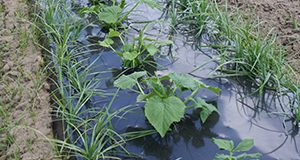
Summer squash is an important vegetable crop in Miami-Dade County. It is grown annually on about 6,000 acres and sold nationwide during the winter in the fresh market. This 16-page fact sheet describes the varieties of summer squash, land preparation and transplanting, what fertilizer to use, irrigation and freeze protection, disease management, insect management, weed management, harvest, and crop rotation. Written by D. Seal, S. Zhang, M. Ozores-Hampton, P. Dittmar, Y. Li, W. Klassen, Q. Wang, and T. Olczyk and published by the Horticultural Sciences Department.
http://edis.ifas.ufl.edu/tr012
Tag: Qingren Wang
Tong Hao: an Asian Vegetable Emerging in Florida
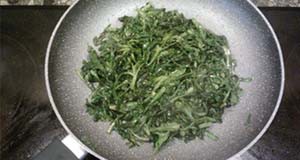
Tong Hao (Glebionis coronaria) is a member of the daisy family and therefore a relative of lettuce. It is an important vegetable in Asian communities. Grown in China for more than 900 years, Tong Hao is a branched annual leafy herb that can be cooked and eaten. This four-page fact sheet provides background information about Tong Hao, including information on growing, harvesting, and cooking it. Written by Guodong Liu, Qingren Wang, Bonnie Wells, Yuncong Li, and David Dinkins, and published by the Horticultural Sciences Department.
http://edis.ifas.ufl.edu/hs1276
Implementing the Four Rs (4Rs) in Nutrient Stewardship for Tomato Production
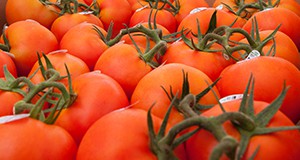 Fertilization plays a critical role in tomato production across the state of Florida. However, appropriate fertilization management depends on four major components (4Rs): right source, right rate, right placement, and right timing. Farming practices that follow the 4Rs can provide nutrients for optimal tomato productivity while minimizing the risk of nutrient losses and adverse environmental effects, both of which are important to the development of agricultural sustainability. This 6-page fact sheet discusses the 4Rs as well as conventional dry source fertilizers, controlled-release or slow-release source fertilizers, and liquid source fertilizers. Written by Qingren Wang, Guodong Liu, Kelly Morgan, and Yuncong Li, and published by the UF Department of Horticultural Sciences, October 2015.
Fertilization plays a critical role in tomato production across the state of Florida. However, appropriate fertilization management depends on four major components (4Rs): right source, right rate, right placement, and right timing. Farming practices that follow the 4Rs can provide nutrients for optimal tomato productivity while minimizing the risk of nutrient losses and adverse environmental effects, both of which are important to the development of agricultural sustainability. This 6-page fact sheet discusses the 4Rs as well as conventional dry source fertilizers, controlled-release or slow-release source fertilizers, and liquid source fertilizers. Written by Qingren Wang, Guodong Liu, Kelly Morgan, and Yuncong Li, and published by the UF Department of Horticultural Sciences, October 2015.
http://edis.ifas.ufl.edu/hs1269
Bitter Melon: An Asian Vegetable Emerging in Florida
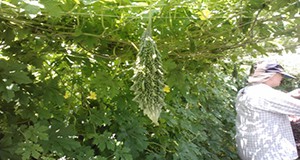 Bitter melon is a tropical and subtropical vegetable crop with long climbing vines which is widely cultivated in Asia, Africa, and the Caribbean. The unripe fruit is used as a vegetable with a pleasantly bitter taste. This 7-page fact sheet provides an overview of this plant as well as recommendations for individuals in Florida who are interested in growing it. Written by Guodong Liu, Qingren Wang, Yuncong Li, David Dinkins, Bonnie Wells, and Yuqi Cui, and published by the UF Department of Horticultural Sciences, December 2015.
Bitter melon is a tropical and subtropical vegetable crop with long climbing vines which is widely cultivated in Asia, Africa, and the Caribbean. The unripe fruit is used as a vegetable with a pleasantly bitter taste. This 7-page fact sheet provides an overview of this plant as well as recommendations for individuals in Florida who are interested in growing it. Written by Guodong Liu, Qingren Wang, Yuncong Li, David Dinkins, Bonnie Wells, and Yuqi Cui, and published by the UF Department of Horticultural Sciences, December 2015.
http://edis.ifas.ufl.edu/hs1271
Long Squash: An Asian Vegetable Emerging in Florida
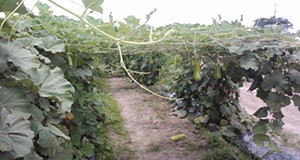 Long squash is an annual, vigorous, and herbaceous crop that was brought to the Americas by Paleoindian populations from Asia before the arrival of Columbus. This 4-page fact sheet provides an overview of this plant as well as recommendations for individuals in Florida who are interested in growing it. Written by Guodong Liu, Yuncong Li, David Dinkins, Bonnie Wells, Qingren Wang, and Yuqi Cui, and published by the UF Department of Horticultural Sciences, December 2015.
Long squash is an annual, vigorous, and herbaceous crop that was brought to the Americas by Paleoindian populations from Asia before the arrival of Columbus. This 4-page fact sheet provides an overview of this plant as well as recommendations for individuals in Florida who are interested in growing it. Written by Guodong Liu, Yuncong Li, David Dinkins, Bonnie Wells, Qingren Wang, and Yuqi Cui, and published by the UF Department of Horticultural Sciences, December 2015.
http://edis.ifas.ufl.edu/hs1272
Long Bean: An Asian Vegetable Emerging in Florida
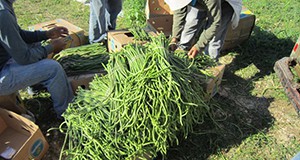 Food diversity, nutritional food supply, and profitability are the priorities of agricultural and horticultural industries. To diversify vegetable products and increase the Florida vegetable industry's competitiveness, a number of new vegetable crops are rapidly emerging in the state. Due to Florida's favorable climate, these vegetable crops grow well and have high market potential. The objective of this 6-page fact sheet is to provide a general overview of long bean, one of the Asian vegetable crops grown in Florida. Written by Kshitij Khatri, Guodong Liu, Qingren Wang, Yuncong Li, David Dinkins, and Bonnie Wells, and published by the UF Department of Horticultural Sciences, October 2015.
Food diversity, nutritional food supply, and profitability are the priorities of agricultural and horticultural industries. To diversify vegetable products and increase the Florida vegetable industry's competitiveness, a number of new vegetable crops are rapidly emerging in the state. Due to Florida's favorable climate, these vegetable crops grow well and have high market potential. The objective of this 6-page fact sheet is to provide a general overview of long bean, one of the Asian vegetable crops grown in Florida. Written by Kshitij Khatri, Guodong Liu, Qingren Wang, Yuncong Li, David Dinkins, and Bonnie Wells, and published by the UF Department of Horticultural Sciences, October 2015.
http://edis.ifas.ufl.edu/hs1268
What is 4R nutrient stewardship?
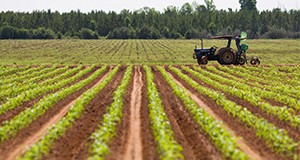
A new and innovative approach to Best Management Practices for fertilizer application known as 4R nutrient stewardship is available, to ensure the environmental, social, and economical sustainability of commercial crop production. This 3-page fact sheet focuses on the basic concepts of the 4R nutrient stewardship principles for commercial crop production. Written by Guodong Liu, Kelly Morgan, Yuncong Li, Lincoln Zotarelli, James DeValerio, and Qingren Wang, and published by the UF Department of Horticultural Sciences, July 2015.
http://edis.ifas.ufl.edu/hs1264
Pest Management of Peppers in Miami-Dade County, Florida
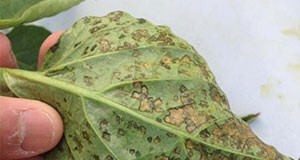
Pest management of peppers in Miami-Dade County is challenging because of a climate favorable to pests. To assist local pepper growers in maintaining crop productivity and improving the quality of produce, this publication illustrates common pests including major diseases and insects and recommends Integrated Pest Management (IPM) techniques, including host resistance, cultivation, sanitation, and physical, mechanical, biological, and chemical approaches, for effective pest management. This 8-page fact sheet was written by Qingren Wang, Shouan Zhang, Dakshina Seal, and Teresa Olczyk, and published by the UF Department of Plant Pathology, February 2015. (Photo: Shouan Zhang)
http://edis.ifas.ufl.edu/pp316
Pepper Production in Miami-Dade County, Florida
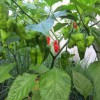 Pepper is an important vegetable crop in Miami-Dade County. Unlike other vegetable crops, peppers are relatively more adaptable to the environment, especially the heat, and are relatively easier to grow. But to be successful, careful attention must be paid to maintain healthy plants and high productivity with efficient management of soil and water for the particular needs of each variety or cultivar. This 7-page fact sheet provides general information and guidelines for pepper growers in Miami-Dade County, including major pepper varieties, and their horticultural traits, and fundamental soil and water management requirements. Written by Qingren Wang, Shouan Zhang, Yuncong Li, Dakshina Seal, Waldemar Klassen, and Teresa Olczyk, and published by the UF Department of Horticultural Sciences, February 2015.
Pepper is an important vegetable crop in Miami-Dade County. Unlike other vegetable crops, peppers are relatively more adaptable to the environment, especially the heat, and are relatively easier to grow. But to be successful, careful attention must be paid to maintain healthy plants and high productivity with efficient management of soil and water for the particular needs of each variety or cultivar. This 7-page fact sheet provides general information and guidelines for pepper growers in Miami-Dade County, including major pepper varieties, and their horticultural traits, and fundamental soil and water management requirements. Written by Qingren Wang, Shouan Zhang, Yuncong Li, Dakshina Seal, Waldemar Klassen, and Teresa Olczyk, and published by the UF Department of Horticultural Sciences, February 2015.
http://edis.ifas.ufl.edu/tr010
Controlled-Release and Slow-Release Fertilizers as Nutrient Management Tools
 There are many fertilizer sources available for commercial crop production. The characteristics of each fertilizer type determine whether its use poses an advantage or a disadvantage to a farmer. This 6-page fact sheet focuses on how to select the right fertilizer to enhance profitability and satisfy best management practices (BMPs). Written by Guodong Liu, Lincoln Zotarelli, Yuncong Li, David Dinkins, Qingren Wang, and Monica Ozores-Hampton, and published by the UF Department of Horticultural Sciences, October 2014. (UF/IFAS Photo by Thomas Wright)
There are many fertilizer sources available for commercial crop production. The characteristics of each fertilizer type determine whether its use poses an advantage or a disadvantage to a farmer. This 6-page fact sheet focuses on how to select the right fertilizer to enhance profitability and satisfy best management practices (BMPs). Written by Guodong Liu, Lincoln Zotarelli, Yuncong Li, David Dinkins, Qingren Wang, and Monica Ozores-Hampton, and published by the UF Department of Horticultural Sciences, October 2014. (UF/IFAS Photo by Thomas Wright)
http://edis.ifas.ufl.edu/hs1255
Consuming local vegetables from our local growers
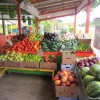 In recent years, consumers increasingly are seeking out locally grown foods, due to concern for freshness, food safety, and the carbon footprint associated with food sourced from distant places. This 5-page fact sheet promotes local vegetable consumption by pointing out some of the advantages, benefits, and business opportunities associated with local vegetable production and consumption. Written by Qingren Wang, Edward A. Evans, Margie Pikarsky, and Teresa Olczyk, and published by the UF Department of Horticultural Sciences, September 2014.
In recent years, consumers increasingly are seeking out locally grown foods, due to concern for freshness, food safety, and the carbon footprint associated with food sourced from distant places. This 5-page fact sheet promotes local vegetable consumption by pointing out some of the advantages, benefits, and business opportunities associated with local vegetable production and consumption. Written by Qingren Wang, Edward A. Evans, Margie Pikarsky, and Teresa Olczyk, and published by the UF Department of Horticultural Sciences, September 2014.
http://edis.ifas.ufl.edu/hs1251
Management of Powdery Mildew in Beans
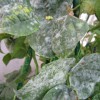 Powdery mildew is one of the most commonly occurring diseases on many types of beans. Although the causal organism rarely causes extensive damage, significant yield losses were reported in Columbia County when infection occurred in dry beans prior to flowering. Accurately identifying this disease and immediately taking action for control are critical to effectively prevent spread of powdery mildew in order to reduce significant losses of yield and quality. This 4-page fact sheet was written by Qingren Wang, Shouan Zhang, and Teresa Olczyk, and published by the UF Department of Plant Pathology, June 2014.
Powdery mildew is one of the most commonly occurring diseases on many types of beans. Although the causal organism rarely causes extensive damage, significant yield losses were reported in Columbia County when infection occurred in dry beans prior to flowering. Accurately identifying this disease and immediately taking action for control are critical to effectively prevent spread of powdery mildew in order to reduce significant losses of yield and quality. This 4-page fact sheet was written by Qingren Wang, Shouan Zhang, and Teresa Olczyk, and published by the UF Department of Plant Pathology, June 2014.
http://edis.ifas.ufl.edu/pp311
SL306/TR003 Sunn Hemp – A Cover Crop in Florida
Revised! SL-306 (formerly SS-AGR-96), a 4-page illustrated fact sheet by Yuncong Li, Qingren Wang, Waldemar Klassen, Edward A. Hanlon, Jr., describes this green manure crop that has been grown for centuries in Southeast Asia — origin and distribution, description, uses, production and harvest, and seed production. Includes references. Published by the UF Department of Soil and Water Sciences, August 2009.
http://edis.ifas.ufl.edu/TR003